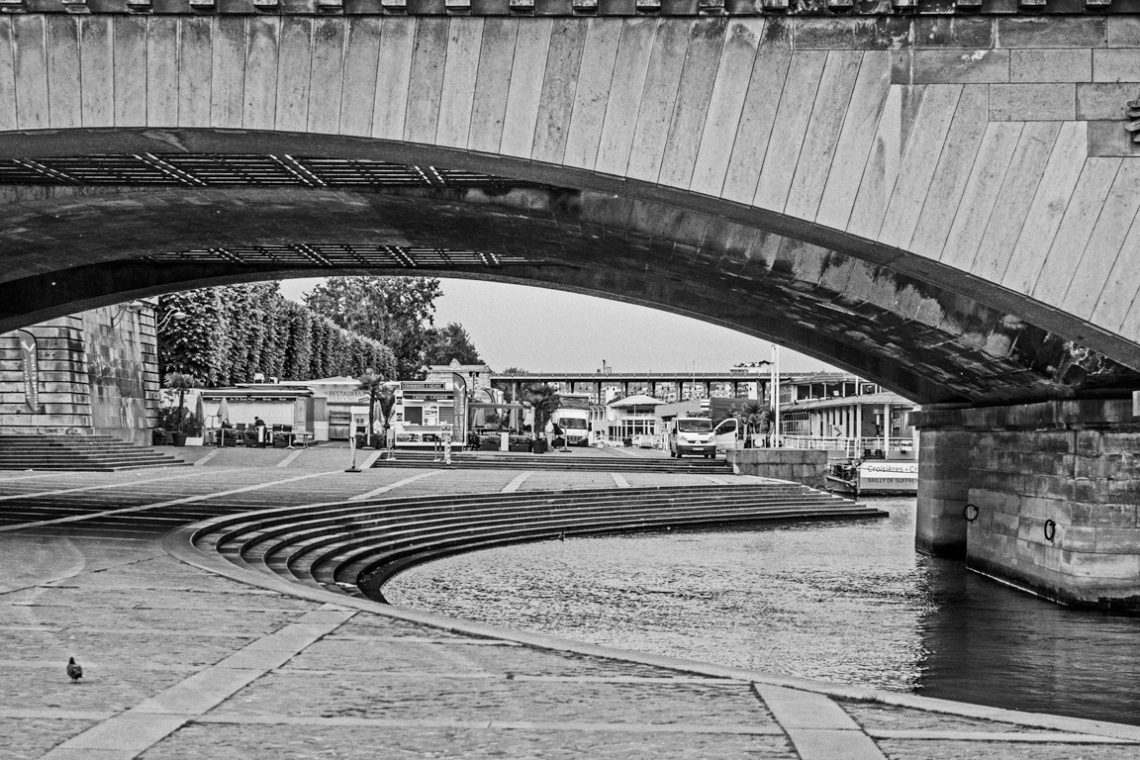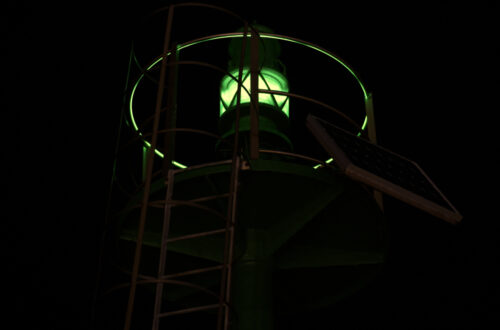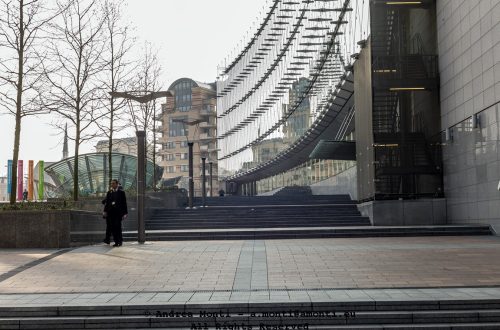
Under the Arc of the Seine
Paris has a way of revealing its geometry to those who care to look. This photograph, taken from the cobblestone banks of the Seine, uses the underside of a bridge as a natural proscenium arch. The frame it creates is both literal and compositional, guiding the viewer’s gaze toward the urban stage beyond. The sweep of the bridge’s curve is echoed by the concentric stone steps leading down to the water, while the horizontal layers of the background—trees, buildings, roadway—add a pleasing counterbalance to the strong arc.
From a technical perspective, the choice of black and white serves the image well. Stripping away colour emphasises the interplay of lines, curves, and textures: the smooth water, the rough stonework, the patterned masonry. Tonal range is handled with skill; the highlights on the bridge’s arch are well retained, and the shadows beneath it avoid the pitfall of blocking up, preserving detail in the stone. The midtones in the distant street and facades remain readable without competing for dominance.
Compositionally, the photograph is disciplined. The bridge occupies the upper third, heavy and grounding, while the lower section offers a layered visual path—from the cobbled foreground, to the pigeon adding a touch of life, to the gently rippling river, and finally to the human-scaled activity in the distance. The eye is naturally led along this path, supported by the converging lines and curves.
If there is one compositional challenge, it lies in the visual weight of the vehicles at the centre of the frame; they provide a point of focus, but their modern bulk contrasts sharply with the timelessness of the surrounding architecture. Whether that is a distraction or an honest record of the contemporary city is, perhaps, a matter of taste.
In sum, Under the Arc of the Seine is a well-constructed study in framing and form—an image that uses the city’s own structures to shape its narrative. It reminds us that, in Paris, even the spaces between its monuments can become art.




